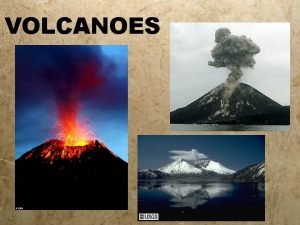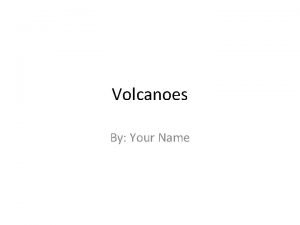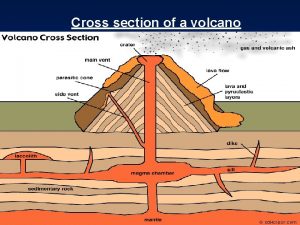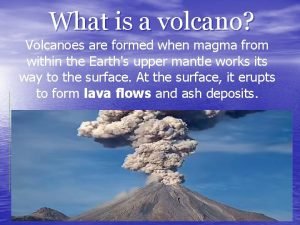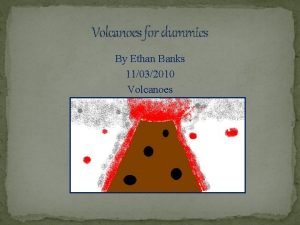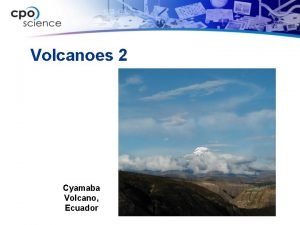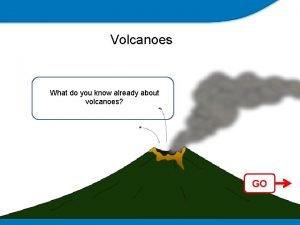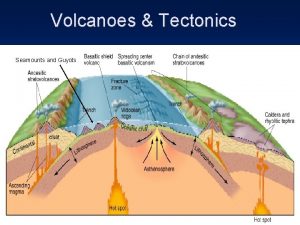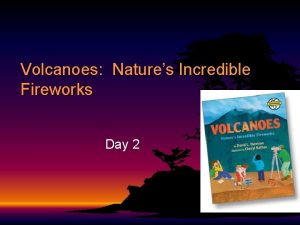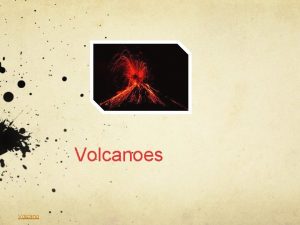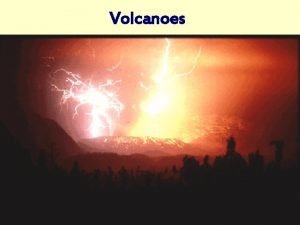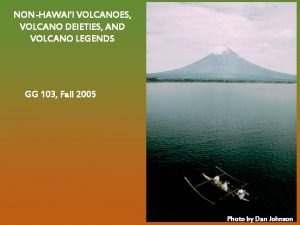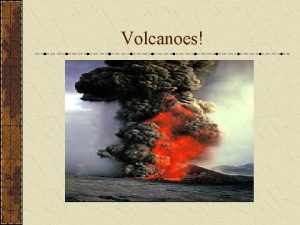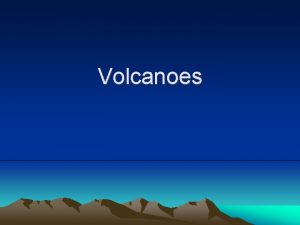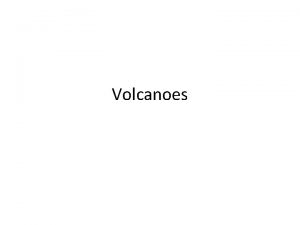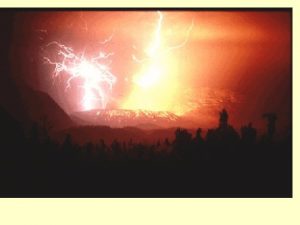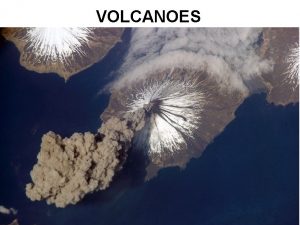Cross section of a volcano Volcanoes are classified










- Slides: 10

Cross section of a volcano

* Volcanoes are classified by the eruption type and by the volcanic cone shape. * There are three basic cone shapes and six eruption types. The three cone shapes are cinder cones, shield cones, and composite cones or stratovolcanoes.

* The six eruption types are in order from least explosive to the most explosive; Icelandic, Hawaiian, Strombolian, Vulcanian, Pelean, and Plinian. * Notice how, as the eruptions become more violent, the cone shapes become more steeply constructed.


* * Icelandic, flood, or fissure eruptions are all terms for volcanic eruptions that flood the surface of the Earth with massive amounts of very hot, very thin, runny lava. Hawaiian eruptions are similar to Icelandic eruptions because both eruption types have many fissures bringing the lava to the surface. Both types of eruptions are known for their beautiful fire fountains like the one shown above. The lava that flows from both types of eruptions is very hot, thin, and runny which allows for fast flowing lava flows

Strombolian eruptions are short lived explosive eruptions that shoot very thick and pasty lava into the air along with bursts of steam and gas. Strombolian eruptions usually produce little or no lava. Because of this the cones that are produced by this type of eruption is a very steep sided cone called a cinder cone. The photo shows a strombolian eruption taking place from a cinder cone.

* Vulcanian eruptions are more violent and explosive than strombolian eruptions. * Vulcanian eruptions are named after the island of Vulcano off the coast of Italy. This is the same island that gave us the name "Volcano". Vulcanian eruptions contain high dark clouds of steam, ash, and gas. * The ash plume builds a cauliflower shaped head and a thinner more treetrunk-like base. When the volcano quits erupting ash and gases it then ejects thick pasty lava. Vulcanian eruptions usually build a steep sided cone that is more symetrical than a cinder cone


* Pelean and Plinian eruptions are the most dangerous and explosive of the eruption types. Pelean eruptions are named for the catastophic eruption on the island of Martinique in the Carribean Sea in 1902. The eruption and the pyroclastic flow that followed killed 29, 000 people almost instantly. "Glowing clouds" of gas and ash flew down the mountain at over 70 miles per hour. * A Plinian eruption is the most explosive of the eruption types. Mt. St. Helens eruption was a plinian eruption. Plinian eruptions are characterized by a very high ash cloud that rise upwards to 50, 000 feet (almost 10 miles) high. Very deadly pyroclastic flows are also part of plinian eruptions.

Mt. Vesuvius, which erupted in 79 A. D. in Italy, was a classic Plinian eruption. Very hot ash falls killed thousands of people in the city of Pompei. Ash falls as high as 17 feet buried the city.
 Insidan region jh
Insidan region jh How are volcanoes classified
How are volcanoes classified Lava plateaus form when _____.
Lava plateaus form when _____. Cross section of a cinder cone volcano
Cross section of a cinder cone volcano How are volcanoes made
How are volcanoes made Volcanoes for dummies
Volcanoes for dummies Where do most volcanoes occur
Where do most volcanoes occur Extreme earth
Extreme earth What do you already know about volcanoes?
What do you already know about volcanoes? Three main ways volcanoes are created
Three main ways volcanoes are created Volcanoes nature's incredible fireworks
Volcanoes nature's incredible fireworks

